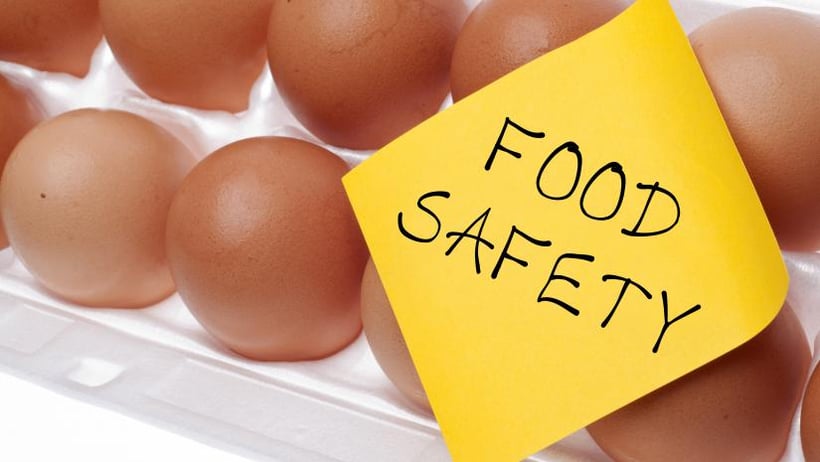
What is cross-contamination?
Cross-contamination is the process by which food becomes contaminated with harmful substances or agents. An example of this is when food poisoning bacteria on food spreads to other foods, surfaces, hands or equipment. It’s extremely easy for cross-contamination to occur, especially in a commercial kitchen, which has many moving parts — and people.
Contaminated food is a serious health risk; pathogens, food allergens, chemicals and objects can make customers sick and cause allergic reactions, injuries or choking hazards. Preventing cross-contamination and other food safety hazards must be the number one priority in any food business.
Cross-contamination in the refrigerator
Some Food Handlers believe that bacteria cannot survive in cool temperatures, so they cut corners when it comes to safe food storage procedures.
Unfortunately, this is a myth. Most refrigerators are set to between 3 and 4°C (37 to 40°F), but some bacteria, such as Listeria, can live and even multiply in temperatures as low as 0°C / 32°F.
Moreover, disease-causing bacteria are not the only food safety hazards inside the refrigerator. Food allergens, chemicals and physical objects can all pose a threat to consumer health.
Consider the following examples:
- Peanut satay sauce in a cracked container leaks onto another food item in the fridge.
- An employee cleans the refrigerator using a chlorine bleach solution in a spray bottle. A box of fresh produce is uncovered on one of the shelves near where the employee is cleaning.
- An employee breaks a glass in the walk-in cooler. On the bottom shelves of the fridge, there are uncovered containers of pre-cut vegetables for salads and sandwich fillings.
- A tray of raw chicken breasts is stored above a container of chocolate mousse. Juices from the raw meat drip onto the ready-to-eat dessert.
The examples above should demonstrate just how easy it is for cross-contamination to occur inside the refrigerator if food is not stored properly.
In all cases, the contaminated food poses a high food safety risk and must not be served to customers.
How to prevent cross-contamination in your refrigerator
To prevent cross-contamination from happening inside the refrigerator, it’s important to follow food safety rules and best practices. For example:
- Raw meat, poultry and seafood must be stored on the bottom shelf of the refrigerator in covered containers or sealed plastic bags to prevent juices from dripping onto and contaminating other food.
- Cooked and ready-to-eat foods like fresh produce must be kept separated from raw meat and other animal products.
- High-risk foods, also called potentially hazardous foods, must be stored in the refrigerator at 4°C or below (5°C or below in Manitoba).
- Cooked food must be cooled to an appropriate temperature before it is put into the refrigerator, as hot foods can raise the overall temperature inside.
The best way to prevent cross-contamination in a food business is through strict food safety policies and procedures and food safety training.
The Canadian Institute of Food Safety (CIFS) delivers high-quality online food safety training for Canadian food workers.
The CIFS Food Handler Certification course is accepted by Health Inspectors Canada-wide. For more information about food safety certification, visit our food handling course page.




